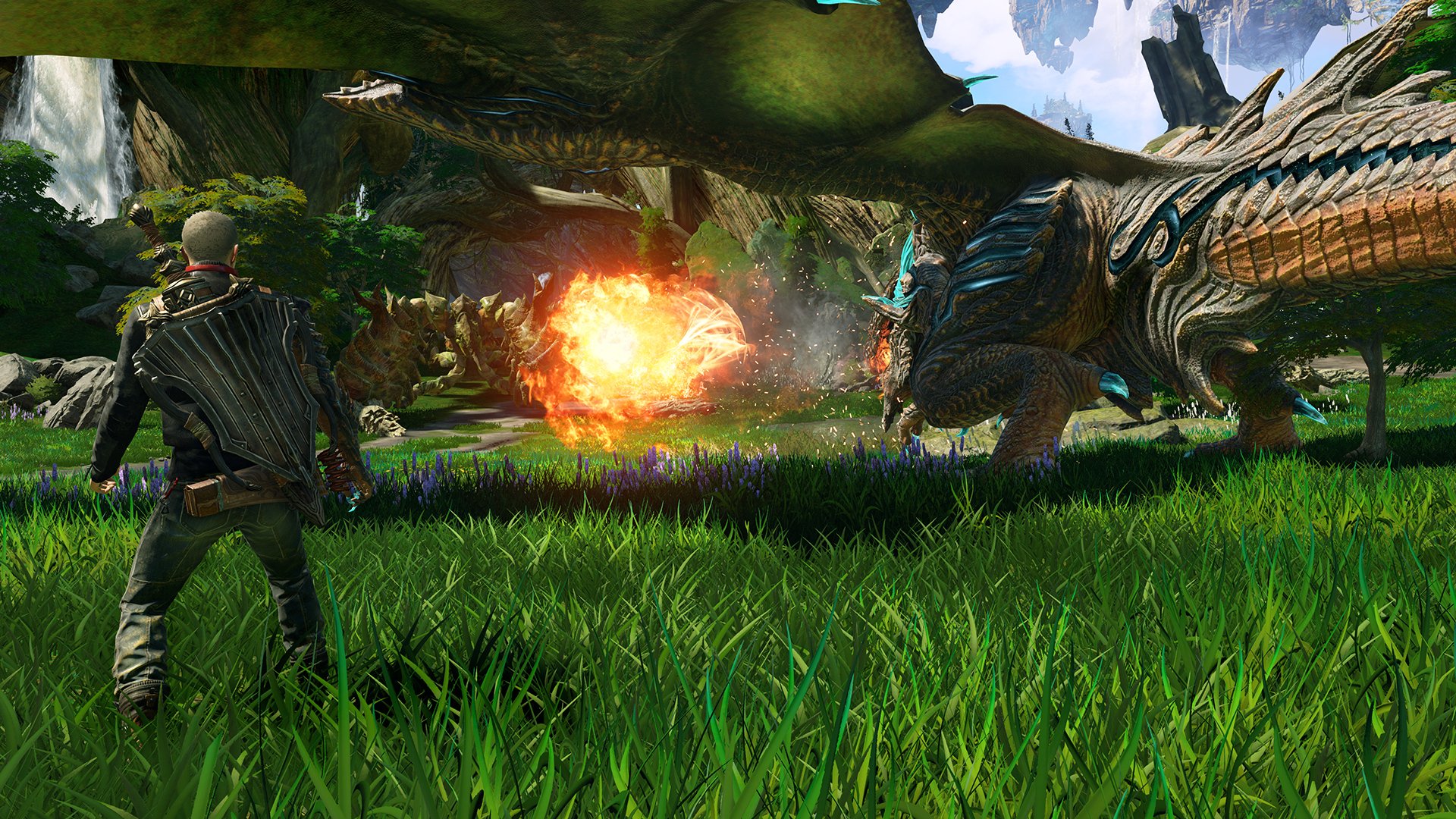Scalebound is a totally unknown quantity - and thats why its so exciting
First things first: Scalebound is already looking better than the demo showed off at Gamescom’s Xbox Media Briefing. The flip-book frame rate of that first gameplay presentation raised eyebrows across the world - not least when it comes from PlatinumGames, renowned for its high-performance brawlers (no one mention Bayonetta on PS3). It seemed that might have something to do with the developer’s decision to use the unfamiliar Unreal engine for the first time, but my behind-closed-doors hands-off session with the game revealed a far more stable prospect than the one we’d been shown.
The demo was an extended version of what appeared on the Xbox stage, a fight that descended from grassy fantasy plains, through darkening foliage and to the door of a dungeon, taking time to show off the action-RPG’s competing systems, which combines elements of Xenoblade Chronicles’ cooldown abilities, Monster Hunter’s focus on situation-specific equipment, and Final Fantasy XV’s AI party interactions.
It’s a huge sidestep from director Hideki Kamiya, known for his incredible hit rate with pure action games, and one I can’t fully quantify as a good or bad thing as yet. His precision brawling focus should lend traditionally flimsy RPG combat some real physicality - something that’s clear from the demo, as we see lead character, Drew blasting off pieces of an insect-crab Mantis boss to expose weak spots, not unlike Bayonetta’s bigger enemies. But there’s a nagging worry that numbers-based combat will shear away some of the zip inherent to Kamiya’s best work.
If combat is to be made into something more methodical, the director’s doing his best to implement some neat mechanical touches. Platinum’s games have always encouraged and rewarded experimentation, and there’s huge scope for that here. In a post-demo video, Kamiya shows me just how differently the fight could have played out. Drew can be equipped with multiple, occasionally enormous weapons (equipped from an inventory system that looks like a callback to one of Kamiya’s early projects, Resident Evil), changing his fighting style entirely, while his AI-driven dragon, Thuban can be customised in multiple ways - from cosmetic skins to full armour and different breath elements. Most interestingly, there’s a dragon Evolution system, which seemingly turns RPG-style levelling into something more akin to outfitting a mech, replacing and upgrading different parts.

That would certainly help explain why we’ve seen wingless beasts that look more like the gargoyle-dogs from Ghostbusters than dragons in both of Scalebound’s trailers, appearing as hints towards the game’s multiplayer mode. Kamiya wouldn’t go into detail on that facet of the game yet, but it’s looking more and more like we’ll be seeing a Dark Souls-esque, drop-in co-op experience, with players bringing their versions of Drew and Thuban into larger combat bouts.
As you’d expect from Kamiya, combat itself seems like the game’s most exciting element. While the hack-and-slash, stat-based fights seem overly familiar on first glance, a heavy tactical element emerges as you see different kinds of fights progress. Against smaller enemies (humans, swarming giganto-insects), Drew takes the lead, using fast-paced swordplay, while Thuban acts as a sort of stomping special move dispenser, able to thin the ranks before they reach you.

That use of AI to control what’s undoubtedly the less traditional character in your party feels a little disappointing, at least initially - but it makes far more sense in fights against Scalebound’s monstrously huge boss enemies. In these situations, Drew simply won’t cut it (unless he’s using his dragon armour power-up, which strengthens him across the board), and your massive companion will make up the bulk of your firepower. At which point, you essentially become a support character. I saw Drew lobbing stun-inducing sticky mines, blowing off chitinous armour from afar with explosive arrows, and generally making a nuisance of himself, allowing Thuban (who can be directed and commanded with point-and-click squad controls) to do even more damage.
Weekly digests, tales from the communities you love, and more
It’s a clever little switch-up, one that essentially forces you to play two traditional RPG roles depending on the situation. That interplay goes further. Small enemies will only drop the game’s Gem currency if Drew kills them; incinerate them easily with dragon-fire and you only get XP as a reward. There seems to be some light destructibility included - Thuban can be directed to destroy structures and trees - and I wouldn’t be surprised to see that rewarded with Gems, however.

There are a lot of questions remaining. First and foremost, Kamiya says that this is neither a fully open-world game, nor a set of Monster Hunter-like hubs. It’s apparently non-linear, with NPC cities to explore - my guess is that it will be closer to Dragon Age: Inquisition’s multiple mini-environments. There’s also the story to contend with: we know Drew has been transported from our world to this primeval fantasy land, all held together by an energy force called Pulse. We don’t know how he got there, or why he has a dragon arm welded to his torso. Most importantly, it’s unclear if those conspicuous headphones he puts on to listen to The Prodigy during combat will become licensed models (although word is that they could be - take heed, Sennheiser, you could look pretty cool here).
The very fact that there’s so much to question here is the real excitement of Scalebound. We’ve become so used to Platinum making games along a set theme that a total switch-up in approach makes this the studio’s least predictable release since its earliest days. With little to point to in the way of previous experience, from one of the very best studios in the world, Scalebound could be anything come release.



